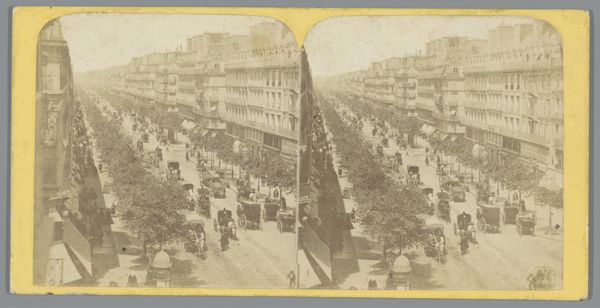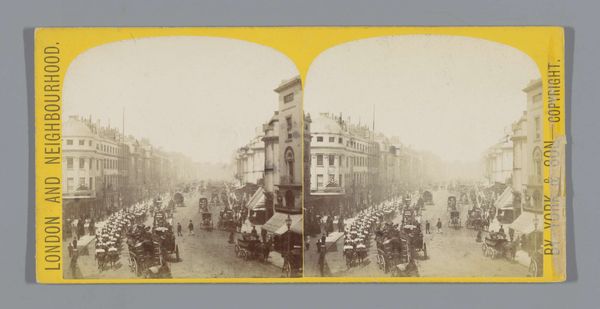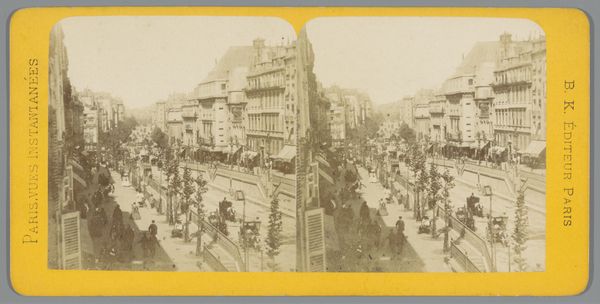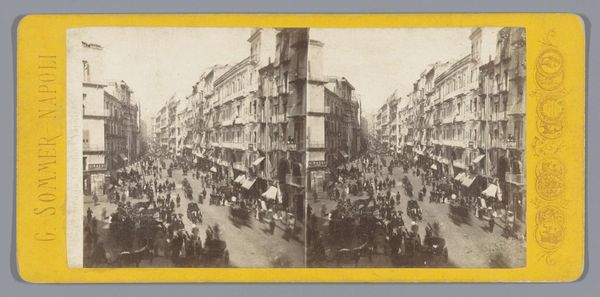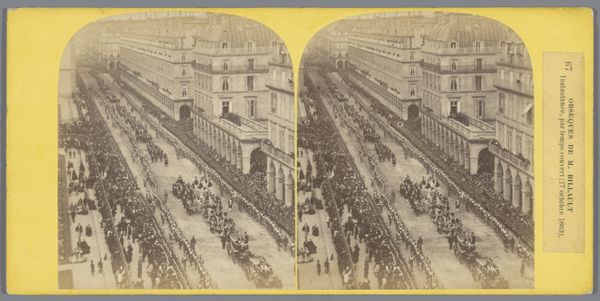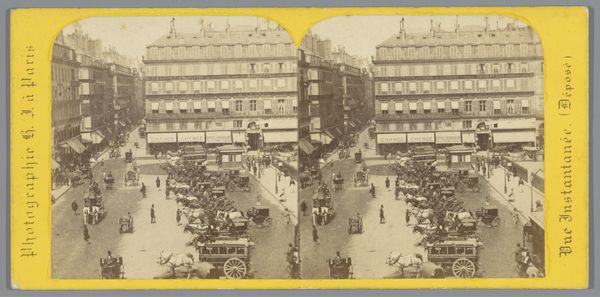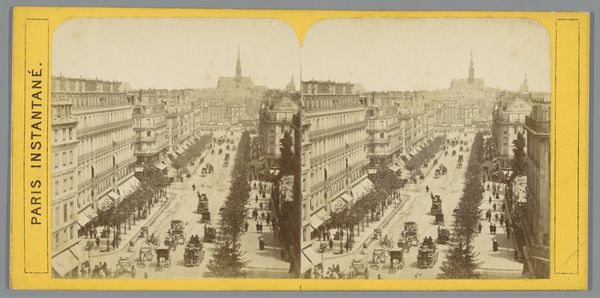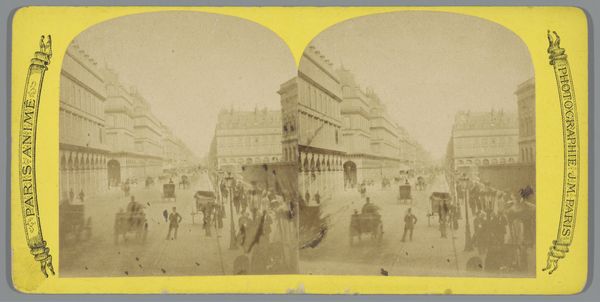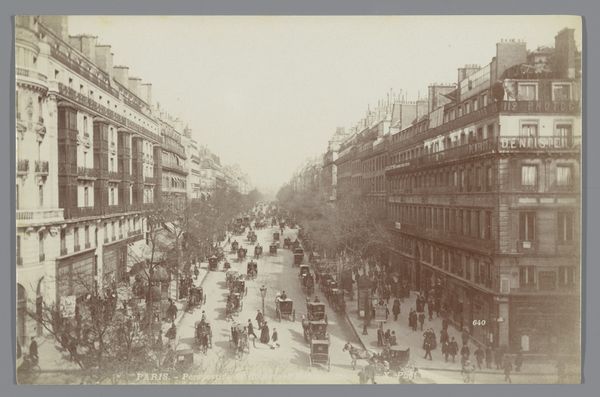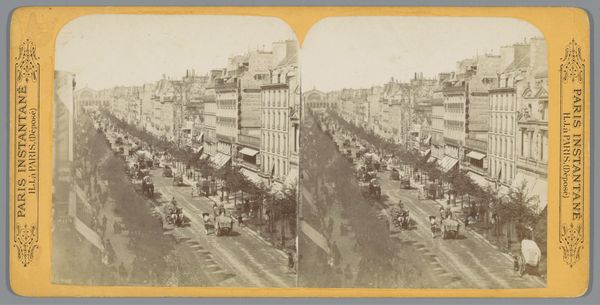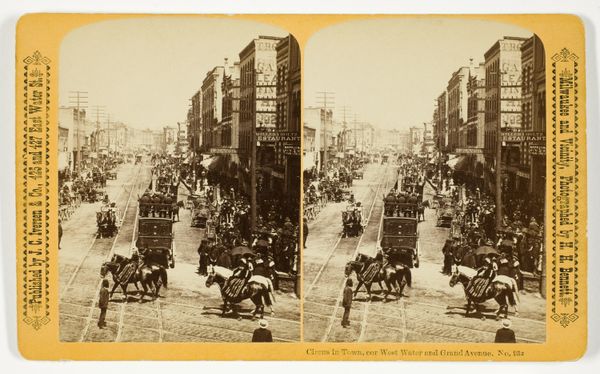
Gezicht op de Boulevard des Italiens met het Pavillon de Hanovre in Parijs c. 1850 - 1880
0:00
0:00
daguerreotype, photography, albumen-print
#
impressionism
#
daguerreotype
#
photography
#
cityscape
#
street
#
albumen-print
Dimensions: height 87 mm, width 179 mm
Copyright: Rijks Museum: Open Domain
Curator: Let’s explore this albumen print, an anonymous photographic cityscape titled "Gezicht op de Boulevard des Italiens met het Pavillon de Hanovre in Parijs," dating from around 1850-1880. Editor: It feels overwhelmingly busy! All those carriages, the blur of movement captured in monochrome… I'm immediately drawn to the sheer volume of traffic and how it shapes the perspective. Curator: Absolutely, that visual busyness is indicative of profound societal shifts. The Industrial Revolution had triggered increased migration to cities like Paris. These advancements were predominantly benefiting upper classes who were becoming increasingly separated from those actually undertaking the physical labour required. It reflects that new rhythm of modern urban life and the widening societal inequalities of the era. Editor: The albumen process is crucial here; understanding the material tells a lot. Imagine the time, the chemicals, the craftsmanship involved in coating the paper, exposing the image, and achieving that sepia tone. This isn’t a snapshot. It is laborious. Curator: Exactly, and let’s not ignore that the Pavilion de Hanovre in the scene – originally built for a Duke but eventually repurposed as a commercial space– points to a complex layering of history and evolving social function within the city fabric. Editor: So, beyond simply recording a street scene, the photograph, itself a material object, becomes an artefact embodying class dynamics and a society's ambition, captured and consumed as part of a new visual culture? Curator: Precisely! Photography then wasn’t just mirroring reality, but was instrumental in defining how reality, and the experience of modernity itself, was perceived, especially regarding issues of labor, capital, and spectatorship. Editor: It also makes me consider the photographers' intentions here, perhaps trying to communicate the modern age, but from which class viewpoint? All decisions from photographic composition to albumen-print choice become highly important Curator: Viewing this, I am now struck again by photography's capability of documenting power imbalances and socioeconomic realities through its very material presence and composition. Editor: Indeed, reflecting on that tension is where the true richness of the artwork resides for me.
Comments
No comments
Be the first to comment and join the conversation on the ultimate creative platform.

